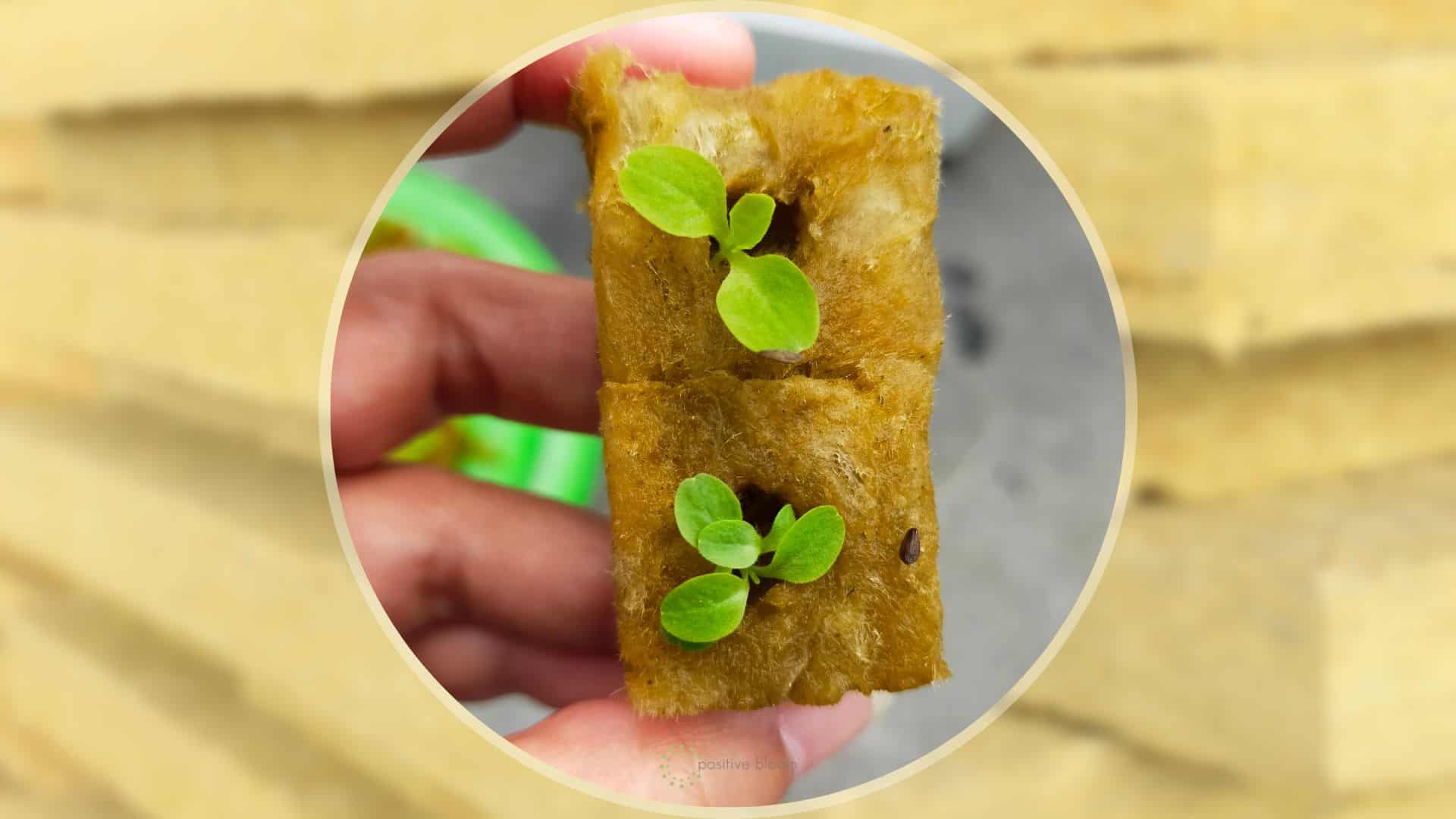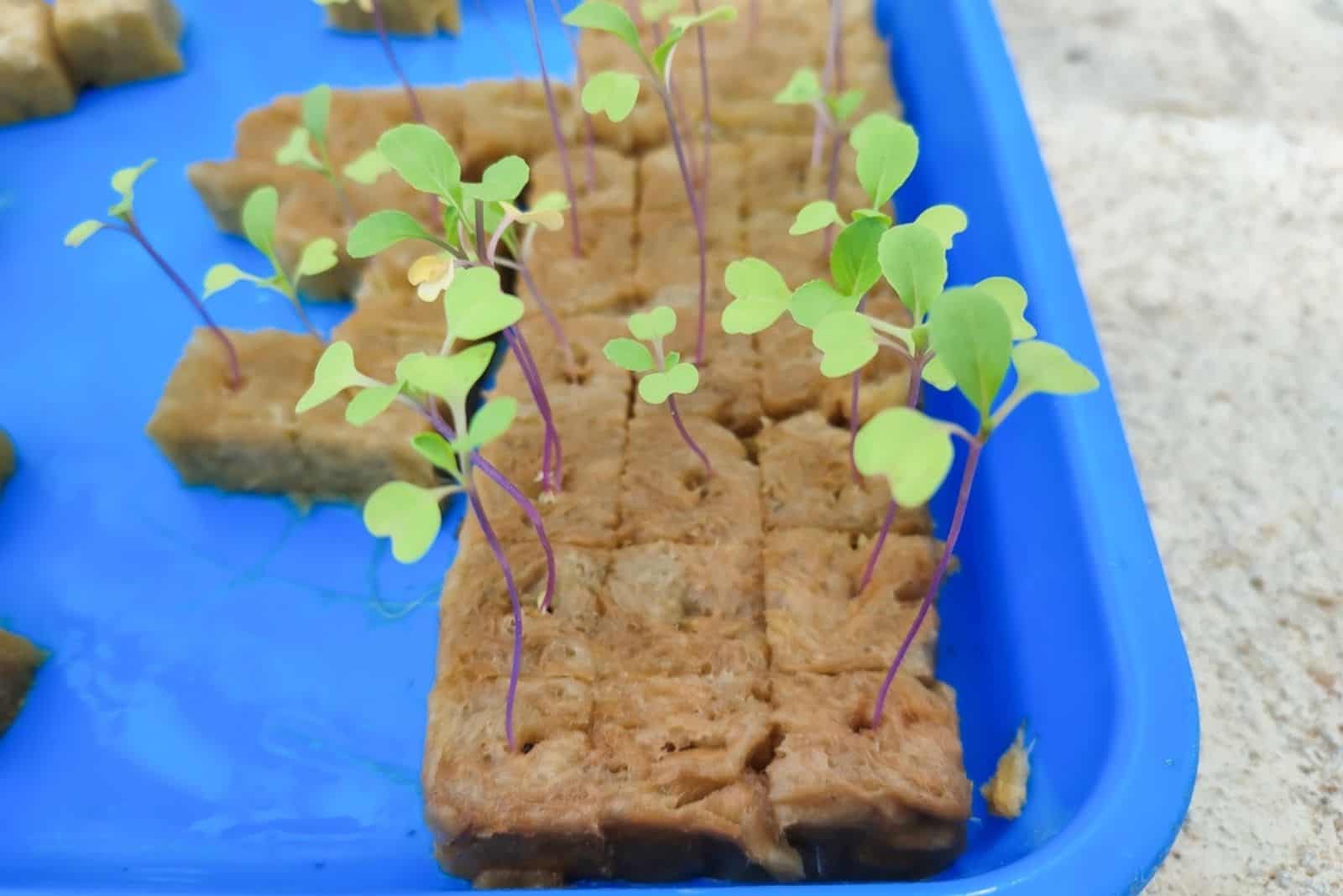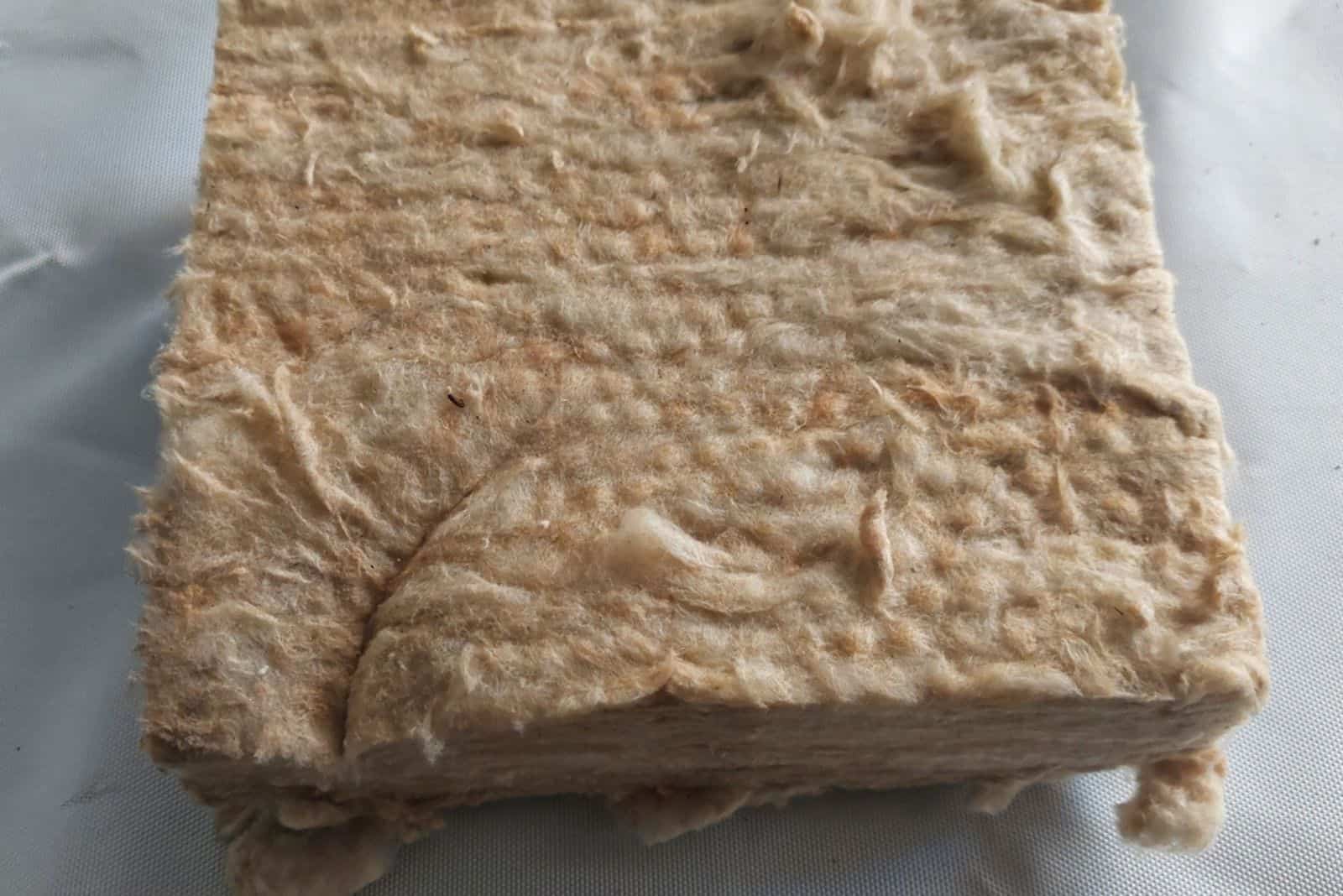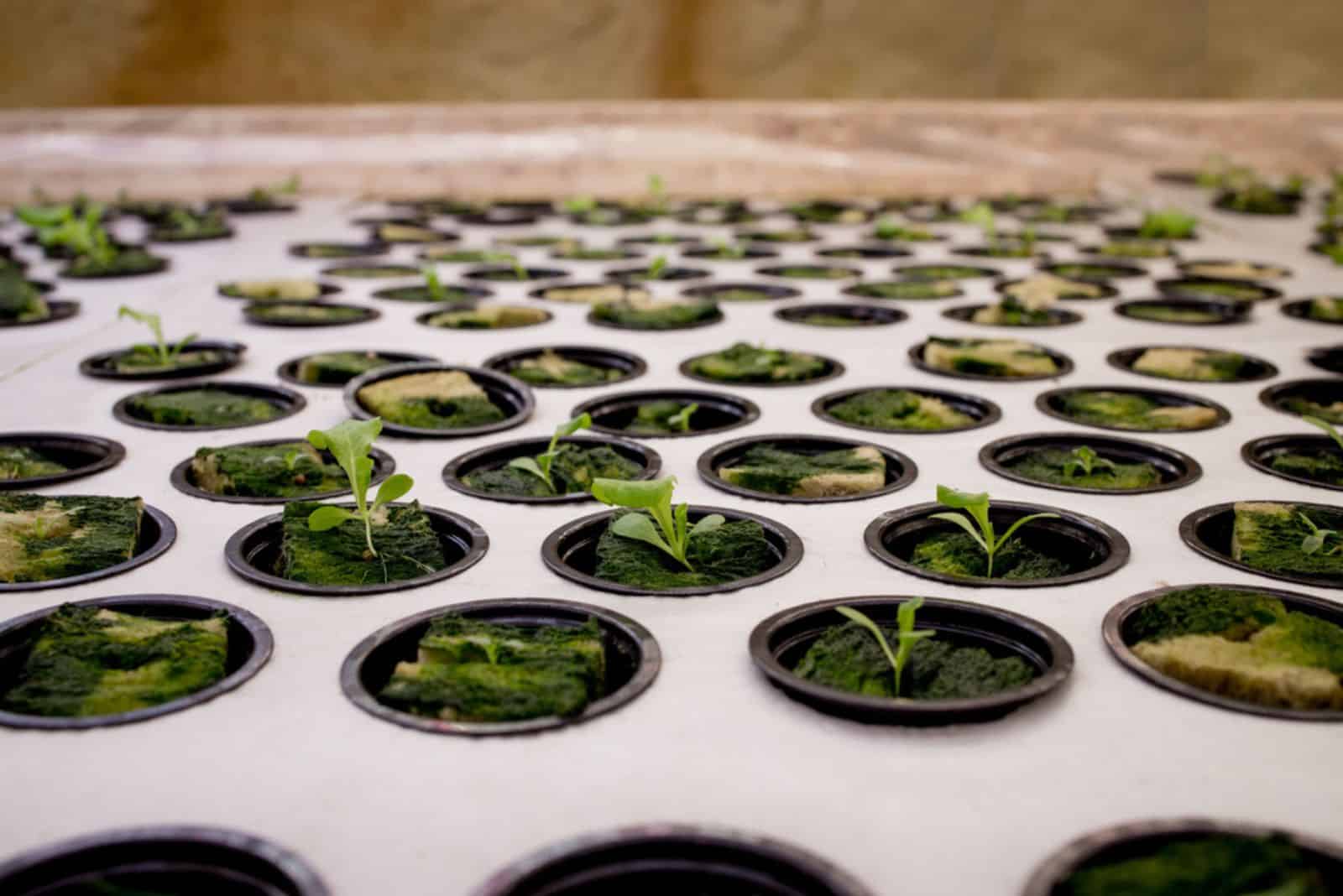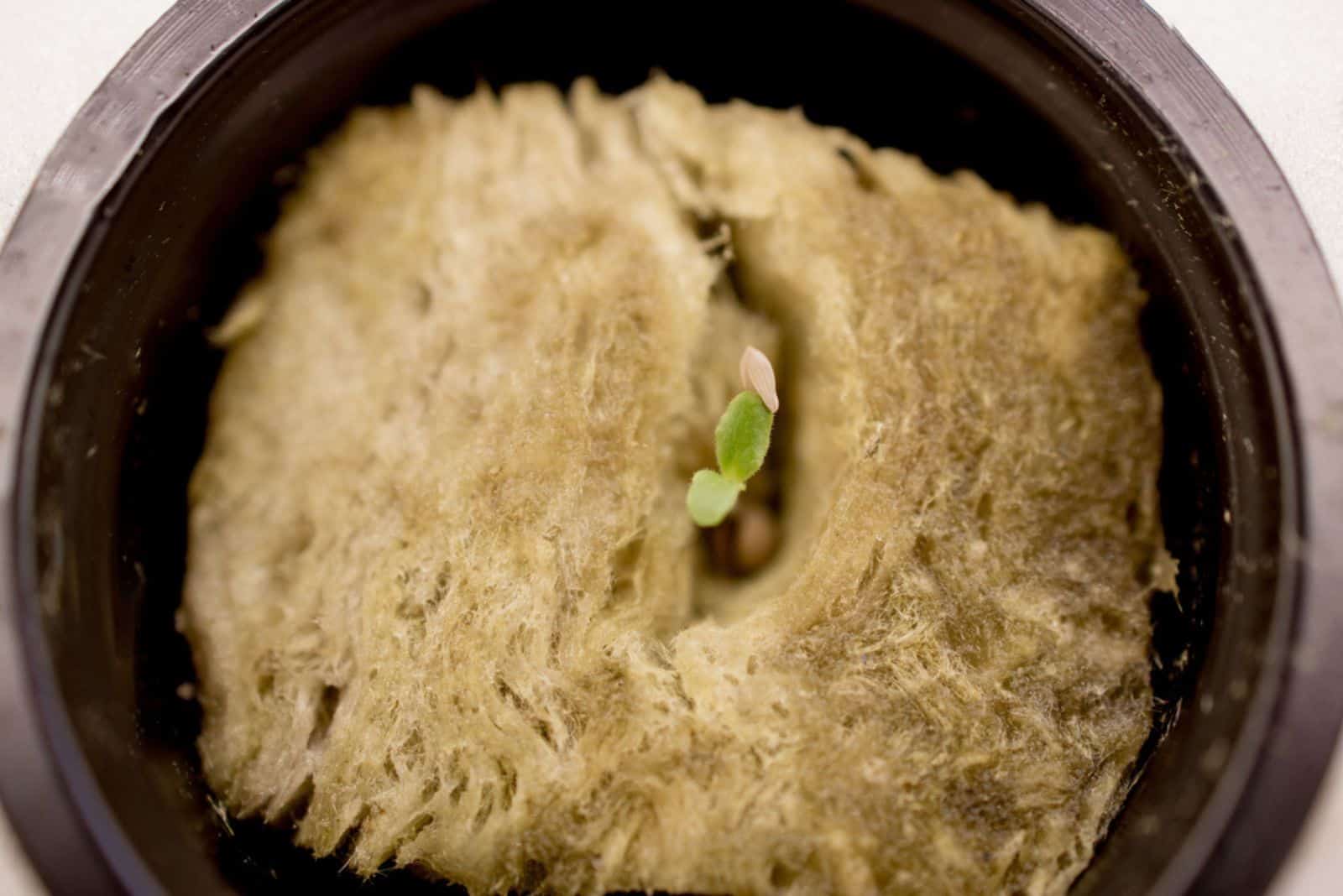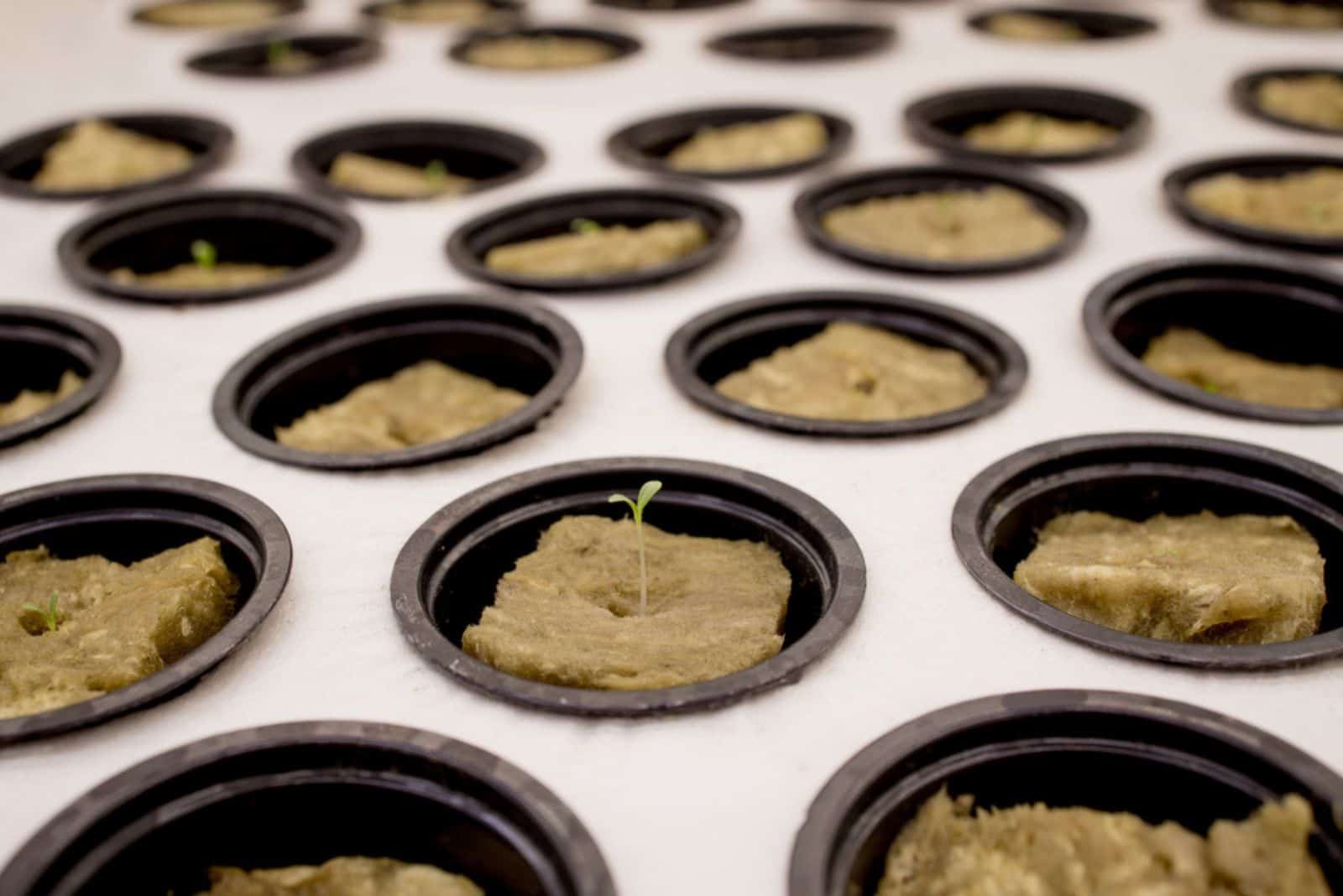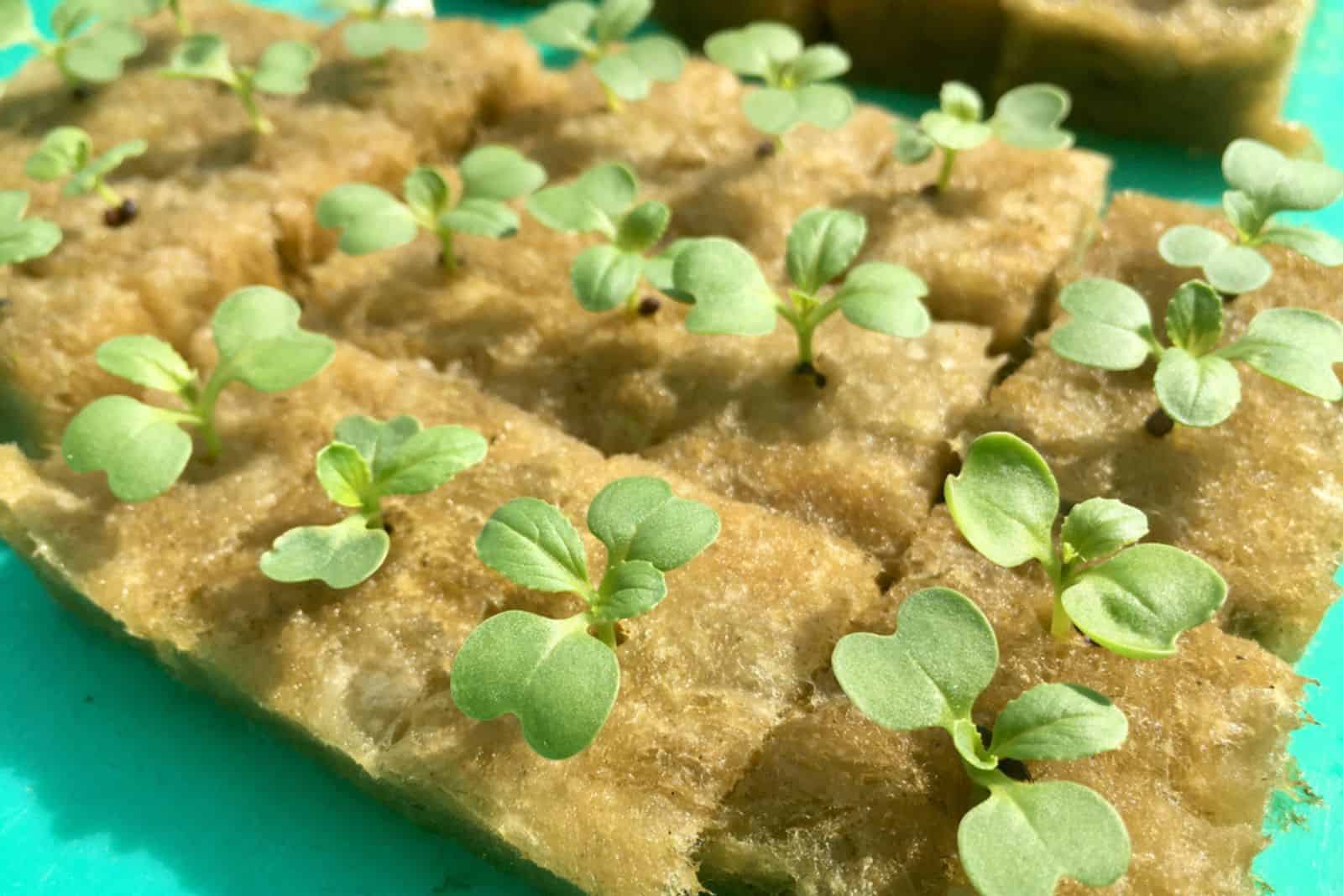When it comes to the ideal growing medium for plants, there are many options. The truth is that some substrates work better than others, while others shouldn’t be used at all.
Therefore, it’s essential to know the characteristics of each substrate, as we don’t want to accidentally harm our precious plants.
Rockwool for plants is a common topic among growers who use hydroponic systems.
This substrate has been used for a long time, and it was actually utilized as insulation back in the 70s. It also goes under the names stone wool or mineral wool.
In this article, I’ll tell you more about the origin and characteristics of this substrate, as well as the pros, cons, and when and how to use it.
Let’s get started!
What Is Rockwool For Plants?
Rockwool substrate contains molten rock fibers of basaltic rock that has gone through the melting process and been transformed into cubes.
The density, water-retention capacity, and porosity of the substrate mainly depend on how the fibers are packed.
This is one of the reasons rockwool has multiple uses; since the density can be controlled, growers use the substrate for different purposes, such as decreasing the growth rate of some plant species or promoting ultra-rapid root growth.
The material was initially used as insulation, and tests for the use of the substrate in plant cultivation were conducted in the 70s in Denmark.
Rockwool eventually became a part of horticulture and has since been thought of as a growing medium. Nowadays, it plays a significant role in hydroponic growing.
Benefits Of Rockwool Cubes In Hydroponic Systems
The substrate provides various benefits for hydroponic cultivation, including assurance of the product’s sterility and the absence of weed seeds, bugs, and diseases.
This is a manufactured product, which means it has been subjected to testing and its quality doesn’t change. Additionally, it won’t degrade quickly unlike other natural components used as growing media.
Since the quality isn’t affected, the substrate retains its original properties, resulting in successful cultivation.
The good thing is that the substrate is lightweight, so you can move and handle it easily. If you are concerned with the stability of your hydroponic plants, remember that the weight of rockwool products increases when watered.
Another benefit of rockwool is that it comes in various sizes. If you need this substrate for seed starting, then go with inch long root plugs.
3-inch rockwool grow cubes are suitable for larger seedlings.
The substrate is frequently used for plant propagation using the stem cutting method. It will provide enough moisture and aeration for your cutting.
It doesn’t contain any natural sources of nutrients, so a well-balanced nutrient solution is administered instead.
It must be mentioned that the substrate won’t affect the makeup of the fertilizer you apply, nor will it change the pH level.
Drawbacks Of Rockwool Cubes In Hydroponic Growing
Even though the substrate doesn’t weigh much, it can be tricky to store or transport it.
Rockwool must be laid on a completely flat surface. This is the only way to avoid water logging or dehydrating the substrate.
As you may assume, this is one of the main reasons why it’s difficult to store or transport.
Unlike other growing media, rock won’t degrade. This makes the substrate pretty environmentally unfriendly. Rockwool users still have trouble disposing of it, but there has been some improvement regarding recycling methods.
Novice or unskilled growers need to establish a proper watering schedule, which is another drawback of rockwool. It may be challenging to follow the watering needs if you haven’t used irrigation systems before.
Another disadvantage of rockwool is the absence of nutrients. Your plants will be completely dependent on hydroponic fertilizers, so fertilizer will be necessary during the entire plant growing process.
This substrate doesn’t contain organic matter or microbes essential for healthy plant growth. However, hydroponic growers can add these compounds to rockwool to make it complete.
When And How To Use Rockwool As A Growing Medium
Using rockwool in your hydroponic garden is a great idea. It will retain water so you’ll avoid plant dehydration.
If you are worried that this feature will lead to overwatering, I have good news for you!
Rockwool cubes provide an enormous quantity of oxygen to the root system, which basically means it’s really hard to overwater your plants!
Here is a complete guide to preparing and using rockwool for seed starting or cloning.
Prepare Your Rockwool
The first thing to do is to prepare the substrate. It has a naturally high pH so it’s necessary to modify the pH to a level that is more suitable for plant development.
A higher pH will render several vital nutrients inaccessible to plants, leading to deficiencies.
Most plant specimens enjoy slightly acidic soil types, so decreasing the pH level in rockwool is advantageous.
While none of the preparation methods for rockwool are particularly challenging, they can take a lot of time.
The preparation process will take a few days, so bear that in mind if you decide on using rockwool.
Soak Your Rockwool
The easiest way to lower the pH of this substrate is to soak it in acidic water.
It is important to maintain a pH above 5.0 to avoid damaging the fibers; instead, gradually adjust the pH until it hits the ideal 5.5.
The next thing is to immerse the rockwool slabs or cubes in water. The best idea would be to leave the slabs or cubes to soak for about 24 hours.
After soaking for the required amount of time, gently take the rockwool slabs out of the water.
Add soaked cubes to your hydroponic growing system, and don’t add plants until the pH level is correct.
Test the pH level, and if it’s anywhere between 5.5 and 6.0, the rockwool is ready for use.
Seed Germination
Seed starting can sometimes be very tricky, and some novice gardeners describe it as an unpleasant experience.
The biggest challenge is avoiding water accumulation and keeping the soil moist.
Due to its exceptional water-holding capacity, rockwool is favored for seed germination because it prevents both the seeds from getting dehydrated and the growing medium from getting overly saturated.
The main prerequisite for successful seed germination is correct moisture content in the growing medium.
A small aperture known as a micropyle allows the water to penetrate the seed. The enzymatic processes that start sprouting in the seed are triggered by moisture.
Rockwool is used in commercial growing for a wide variety of plants, including lettuce, cucumber, melons, and many more.
How To Use Rockwool For Seed Germination
The first step is to prepare the rockwool using the procedure described above.
You should make a tiny hole in the top of the substrate, then insert 2 seeds in the hole and press them using a thin straw.
Squeeze the top of the hole to close it. You can put the cube in the seed starter trays that come with humidity domes.
Make sure the temperatures don’t go below 70 or above 80 degrees Fahrenheit. Since moisture matters most, I recommend spritzing the cube whenever it feels dry.
Once the seeds sprout, you need to ensure a suitable light level. Artificial lights can help you with this.
Before installing artificial lights, make sure to uncover the cube. If you put two seeds in each cube, trim the tops off the seeds that aren’t robust enough. Pulling them out could also uproot the healthier plantlet, so refrain from doing so.
Wait until new growth reaches about two inches and then transplant it.
Propagation
Stem cutting is an excellent propagation method for creating plant clones.
This approach is less expensive than buying seeds and beginning from scratch because it produces an exact replica of the original.
The essential thing is to keep high humidity levels for the cuttings in order to enhance root development.
If your plant is dehydrated it won’t display new growth, including the development of the root zone.
Another benefit of cloning is the possibility to control the surrounding environment. When it comes to rockwool and cloning, these two make a great combination.
If you purchase the substrate from reliable rockwool brands, you can be sure that the processing of the substrate involved heating, which results in a sterile substrate and means your cuttings can’t be infected by harmful fungus.
How To Use Rockwool For Propagation
Make sure the plant you want to propagate is healthy, and don’t forget to irrigate it 24 hours before taking the cuttings.
Stem cuttings should be about 3 to 4 inches long and with at least one node attached. You can also apply rooting hormone to the end of the cutting (the one that will be inserted in the rockwool cube).
Now put the cutting in the cube, but don’t let the cut end protrude past the bottom part of the cube.
It would be best to use nursery trays with humidity domes, which are available in plant nurseries or online.
As far as the potting soil is concerned, I recommend using vermiculite or perlite. Put the soil in the tray and place the cube with the cutting over the soil.
Place the humidity dome over the tray. Regarding temperature, the cutting will root faster at around 80 degrees Fahrenheit.
As soon as roots start to appear, uncover the tray for a few hours. Keep uncovering the tray for about a week and then remove it permanently.
Key Takeaways
We’ve seen the benefits, drawbacks, and uses of rockwool substrates, and below is a list of what to do and what to avoid with this substrate!
1. As preparing the rockwool cube can take a few days, plan well when to start, as the wrong pH level can destroy the seeds or cuttings.
2. The substrate contains fibers that may harm the skin. To avoid irritation or even eye and lung issues, use protective gear when handling the substrate.
3. Sanitize the nutrient solution before adding it to the cubes in order to avoid damaging the hydroponic system in terms of contamination.
4. After you’ve finished using the cubes, dispose of them. The substrate is manmade, which means it won’t degrade and will stay in landfill forever. I recommend breaking up the cubes of old rockwool and incorporating the fragments into the growing medium rather than discarding them.
The potting soil will be amended with water-retaining material and there will be no waste; a win-win situation!
5. Sterilize the substrate if you want to use it multiple times. Pour boiling water over the cube to eliminate any germs or fungi. Some sources advise treating the substrate with chemical solutions for sanitization, but the chemicals can remain in the cubes and affect your plants.
6. Add nutrient solutions if using this substrate for plants because it doesn’t contain nutrients, so your plants can display poor or no growth at all due to nutrient deficiency.
Wrapping Up
Plant growers use different methods and substrates for plant cultivation. Rockwool isn’t really a new method, but it’s growing in popularity more and more.
Rockwool for plants is frequently used in hydroponic growing. Yes, the substrate has some drawbacks, but I believe the benefits outweight them.
If you are looking for a perfect material for seed germination, rockwool is all you need. This also applies to plant propagation.
Follow our advice for using this substrate and make sure to follow the precautionary measures!
Until next time!

